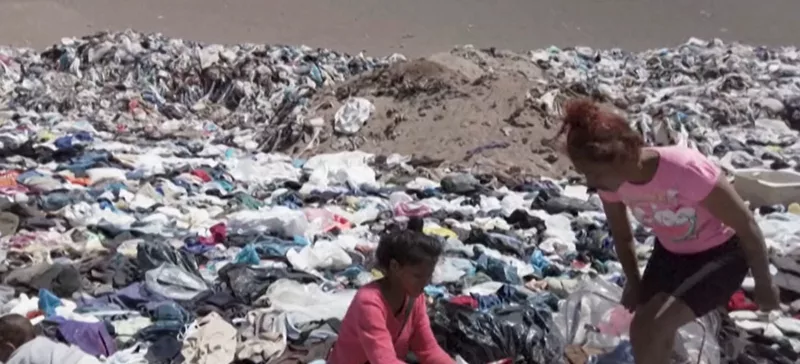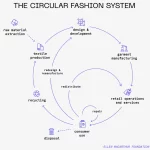
Used clothing dumped in Chilean desert. Picture Courtesy: Deutsche Welle (DW)
Made in China, consumed in Europe, dumped in Chile. The country is one of Latin America’s biggest importers of used clothing. What cannot be recycled ends up in the desert. Up to 20 tons of textiles are illegally dumped in the Atacama Desert each day.
In 2021, Chile was the fourth world importer of used clothing and unsold clothing balances, and the first in Latin America. Most of them, around 126,000 million tons of imports, came from China, the United States and the Republic of Korea. An important part of these garments lacks value in the second-hand clothing market. The UN recommends that the Government of Chile better regulate imports by allowing only good quality clothing.
Around 40% of this clothing enters the country through the free zone of Iquique, in the north of the Atacama desert, but a significant part of these garments has no value in the second-hand clothing market, so it is dumped in the desert.
Most of the garments are of low quality, made with synthetic fibers or mixed with chemicals, which release pollutants into the air, soil and water, harming the environment and local communities.
In this context, the Economic Commission for Europe (UNECE), the Economic Commission for Latin America and the Caribbean (ECLAC) and the NGO Fashion Revolution Chile are carrying out a joint study* on the value chain that involves trade, import and disposal of second-hand clothing in Latin America, particularly in Chile.
The study, whose preliminary results have already been released, examines the world trade flows of used textiles and the commercial and environmental regulations of Chile and other countries in the region.
It also investigates the legislation related to the import, classification, elimination and recycling of textile waste in Chile and analyzes the business models of collection, classification and export of used garments in the European Union to better understand the origin of second-hand clothing exports. .
Main exporters and importers
In 2021, the main exporters of used clothing were the European Union (EU), the United States (US) and China. At the country level, the US is the main exporter (700,000 tons), with Africa and Latin America as the main destinations. China has become a prominent player in the past five years, sending clothes to African countries like Kenya, Angola and Ghana.
That same year, Asia was the main importer of second-hand clothing (28%), followed by Europe (24%) and Africa (19%). Latin America and the Caribbean accounted for 16% of total imports, and non-EU European countries for 10%. This suggests that some countries act as import and export hubs.
These evidences show the urgent need in the global fashion market to move from a linear value chain to a genuinely circular one. This is where the design of public policies faces its greatest challenge, both in exporting and importing countries.
Clothes of better quality and durability
On the export side, the study seeks solutions to reduce the amount of textile waste generated through large-scale Extended Producer Responsibility (REP) systems.
Producers should design garments of better quality and durability, which can be repaired and recycled. In addition, they should cover end-of-life recycling.
Mandatory recycling targets are another possible measure, ensuring clothing contains a certain percentage of recycled products, creating incentives for circular business models and stimulating investments in recycling infrastructure.
Also, clothing sorting should be improved to ensure that low-quality clothing remains in the country of origin for recycling or disposal.
Only used textiles with market value abroad should be allowed to be exported. This will require more granular and quality-controlled international standardization of textile waste, which UNECE supports through its ongoing circular data project.
The international trade in second-hand clothing should promote the trade in certified clothing in the country of destination based on its quality and usefulness (size and season).
Regarding imports, the report will recommend the Chilean government to better regulate imports (allowing only good quality clothing with clear information on material content) to prevent the entry of textile waste, improve customs controls, introduce Extended Responsibility schemes of the Producer on a large scale with mandatory recycling targets, invest in recycling infrastructure and facilitate circular business models.
The study, carried out with the support of the European Commission, is expected to be presented in mid-2023 in Santiago and Geneva.
*The study is carried out in connection with two leading UNECE initiatives to advance sustainability, traceability and circularity in critical sectors for the digital and green transition, in particular in the clothing and footwear industry: The Sustainability Pledge and Circular STEP . (Texts only in English))
The preliminary results of this report were discussed at an event on April 27 with representatives of NGOs, government and the private sector as part of ECLAC’s 2023 Sustainable Development Forum in Santiago, Chile.
Fast fashion – Dumped in the desert | DW Documentary





